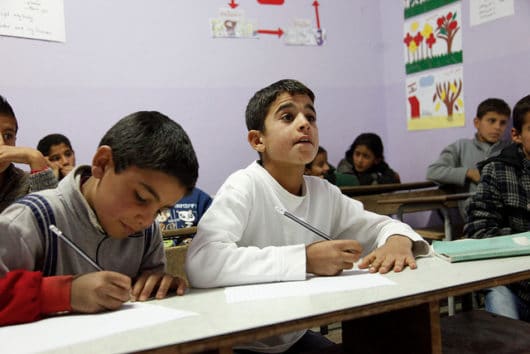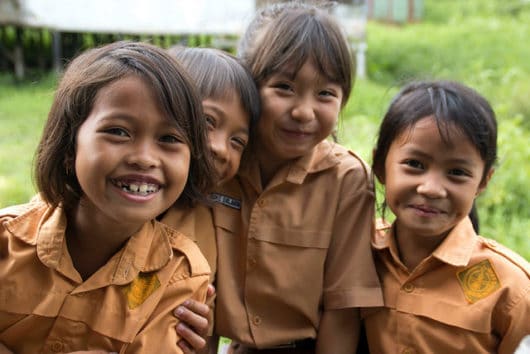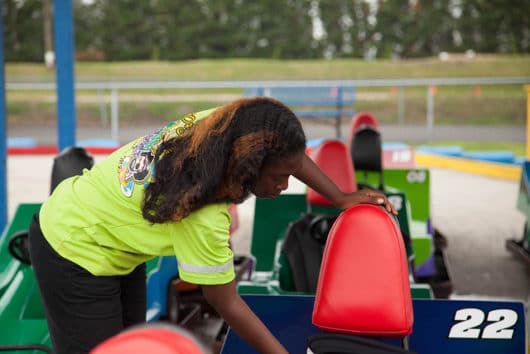
Currently, there are 31 million young girls, starting at age five that are not in a school setting. In fact, there is a whole host of startling statistics about the condition of girls across the globe:
- One in 9 girls are married before the age of 15
- Internationally, 65 million girls are not attending school
- 774 million people are illiterate across the globe, with two-thirds of that number being females
These numbers are not pleasant to acknowledge but their content is a reality. Thankfully, there are many movements and organizations today who are trying to empower woman and having success in educating girls.
Developments in Literacy
Developments in Literacy (DIL) is an organization managing 124 child-friendly schools across three Pakistani provinces. Currently, 24 percent of Pakistan’s population lives below the poverty line. With that sobering state of being in mind, DIL’s goal is simple: the organization strives to offer safe spaces for students to learn and teachers to train. DIL is providing education for students from nursery age all the way until grade 10.
Developments in Literacy is also steadfast in providing girl-friendly education. In DIL schools, the enrollment rate of girl students is at 67 percent and almost 90 percent of the staff is female. These centers offer a “child-centered approach with an emphasis on gender sensitivity and inclusiveness for all.” The main goal of this organization is to ensure that no child, male or female, be left behind or uneducated due to life circumstances in Pakistan.
Girl Effect
Girl Effect works in Asia and Africa and mostly focuses on a girl’s holistic journey into adulthood. Originally founded by the Nike Foundation in 2004, Girl Effect is now its own non-profit organization consisting of media, mobile and brand experts as well as developers. Girl Effect aims to create brands that can chart a course for a young girl from day one.
The organization also gives girls outlets to express themselves openly and research anything they may question. One of Girl Effect’s brands is Ni Nyampinga, the name meaning ‘beautiful girl inside and out who makes wise decisions’ in Rwanda’s native language. It is a multi-platform consisting of a magazine, radio show and a talk show all made by girls, for girls. Ni Nyampinga is a country-wide movement making an impact — 8 in 10 of the citizens of Rwanda have heard of it and half of the citizens over age 10 have listened to the program.
Wiser
Wiser imagines a world where young women and girls are healthy, educated and in control of their own decisions. In Kenya today, there are 3,000 secondary schools educating 620,000 students but only 40 percent of these students are girls. The basis of the Wiser organization is to work with girls who may be poverty-stricken, affected by HIV/AIDS or impacted by gender-based violence.
The Wiser Girls Secondary School in Kenya provides clothing, learning materials, housing and essential medicine to their borders. Kenya has a population of 43.5 million and 1.6 million are living with HIV. All the Wiser girls receive extensive sexual reproductive education, sanitary napkins and cleanliness training. The school has done so well that it has been ranked in the top 1 percent of secondary schools in Migori County.
Commit 2 Change
In India, Commit 2 Change (C2C) works with orphan girls who are 13-18 years old. The girls in these homes are more often than not abounded by their families. The reasons for desertion can range from having HIV, the family being too poor or simply being born a girl. Due to these reasons, many girls in India are now at risk for sex trafficking and early marriage. Commit 2 Change has seen that the best way to make an impact is by focusing on girls in secondary education.
Secondary education starts at the age of 14 and is where the highest drop-out rates occur; by catching the girls at this crucial point of development, C2C believes that they can help teach girls ways to tackle problems in the outside world. Commit 2 Change helps with tuition fees, school supplies and even training programs. Just by studying an extra year in secondary school, C2C has found that it boosts wages by 15 percent and 95 percent of the girls helped by Commit 2 Change believe their education is the pathway to success.
Success in Educating Girls
Successfully educating girls can increase their economic standing, decrease HIV risk and encourage later-in-life marriages. While there is still room for global improvement, these four organizations are going above and beyond in advocating for girls and serve as role models for organizations across the world.
– Jennifer O’Brien
Photo: Flickr









